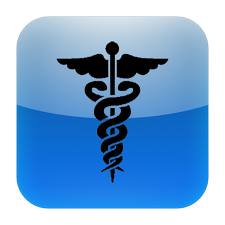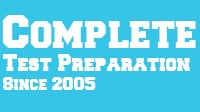
Free Pharmacology Practice Questions
- Posted by Brian Stocker
- Date June 13, 2018
- Comments 0 comment
Taking a Medical Assistant certification exam? Practice your knowledge of medical pharmacology and lab with these pharmacology practice questions.
Pharmacology Practice Questions
1. What is the difference between a Schedule IV and Schedule V drug?
a. Schedule IV requires a prescription and Schedule V does not.
b. Schedule V requires a prescription and Schedule IV does not.
c. Schedule IV has moderate potential for abuse and Schedule V has low potential.
d. Schedule V has moderate potential for abuse and Schedule IV has low potential.
2. What is the difference between Schedule II and Schedule III drugs?
a. Schedule II drugs have a high potential for abuse and Schedule III drugs have a moderate potential for abuse
b. Schedule III drugs have a high potential for abuse and Schedule II drugs have a moderate potential for abuse
3. Which of the following is a Schedule II drug?
a. Valium
b. Heroin
c. Barbiturates
d. Cocaine
4. What is the adult normal range bleeding time?
a. 2 – 9 minutes
b. 5 – 10 minutes
c. 1 – 5 minutes
d. 7 – 15 minutes
5. What is the adult normal range for cholesterol (total)?
a. 90- 100 mEq/L
b. 80 – 95 mEq/L
c. 98 – 110 mEq/L
d. 95 – 120 mEq/L
6. What is an adult normal range reading for glucose?
a. 80-110 mg/dL
b. 100 – 120 mg/dL
c. 75 – 95 mg/dL
d. 110 – 130 mg/dL
Pharmacology Practice Question Answer Key
1. B
Schedule IV
(A) The drug or other substance has a low potential for abuse relative to the drugs or other substances in schedule III.
(B) The drug or other substance has a currently accepted medical use in treatment in the United States.
(C) Abuse of the drug or other substance may lead to limited physical dependence or psychological dependence relative to the drugs or other substances in schedule III.
Schedule V
(A) The drug or other substance has a low potential for abuse relative to the drugs or other substances in schedule IV.
(B) The drug or other substance has a currently accepted medical use in treatment in the United States.
(C) Abuse of the drug or other substance may lead to limited physical dependence or psychological dependence relative to the drugs or other substances in
schedule IV.
2. A
Schedule II
(A) The drug or other substances have a high potential for abuse
(B) The drug or other substances have currently accepted medical use in treatment in the United States, or currently accepted medical use with severe restrictions
(C) Abuse of the drug or other substances may lead to severe psychological or physical dependence.
Schedule III
(A) The drug or other substance has a potential for abuse less than the drugs or other substances in schedules I and II.
(B) The drug or other substance has a currently accepted medical use in treatment in the United States.
(C) Abuse of the drug or other substance may lead to moderate or low physical dependence or high psychological dependence.
3. C
Cocaine is a Schedule II drug. In general, the following are Schedule II
• Opiates
• Stimulants
• Depressants
• Cannabinoids
4. A
Normal bleeding time values fall between 2 – 9 minutes depending on the method used.
5. C
The adult normal range for cholesterol (total) is 98 – 110 mEq/L.
6. C
The normal result for a glucose reagent strip urinalysis is negative.
Date Published: Wednesday, June 13th, 2018
Date Modified: Saturday, May 25th, 2024
Got a Question? Email me anytime - Brian@test-preparation.ca
You may also like
CELPIP Writing Prompts
The CELPIP writing evaluates your ability to communicate effectively in written English different tasks. Here are some sample CELPIP Writing prompts for writing an exmail. You are given a prompt and a scenario. Your email may be formal or informal, …
CCAT Vocabulary Practice – Grades 4 – 5
1. What is the definition of the word ‘polygon’? a. A curved line b. A straight line c. A closed plane figure with straight sides d. A round shape 2. Which term means to ‘depict or show something’? a. Represent …
Vocabulary Practice for Grades 4 & 5
1. What is a “polygon”? A) A three-dimensional shape B) A figure with multiple angles and sides C) A type of line segment D) A type of angle 2. What does the word “represent” mean? A) To take away something …
